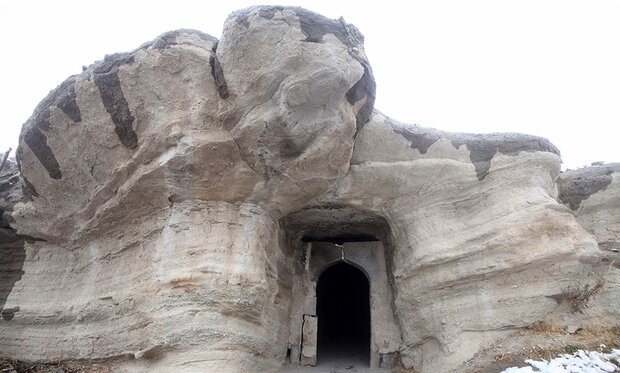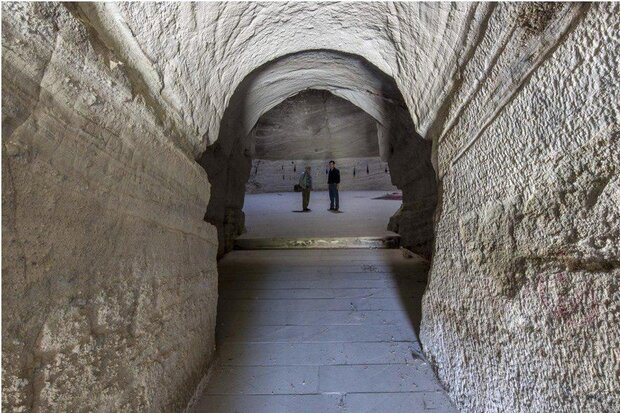Off the grid: discover millennia-old place of worship in northwest Iran

TEHRAN – With their breathtaking architecture, splendid facades, and sheer size, places of worship are often some of the most beautiful buildings. However, there are some celebrated for their bizarre situation or great antiquity.
Qadamgah, which is the main focus of this story, is a millennia-old subterranean temple repurposed to be a mosque centuries ago.
In fact, the creation of rock architecture across the Iranian plateau is influenced by the religious, geographical, and political atmosphere of their time.
Such structures are mostly formed by dominated empires of the time. Sometimes a place of worship has continued to be served in later periods but it has been changed in its functions. Experts say one of the reasons that have attracted men to mountain and rock cliffs in different schools was the religious traditions of the community.
Qadamgah is said to be a place of worship where ancient Mithraism rituals were observed before the advent of Islam.

The place of worship, which sometimes is referred to as a cave, is situated upstream of Qadamgah’s graveyard, near Badamyar village, in the environs of Azarshahr in the northwestern West Azarbaijan province. It is located some 200 meters from a historical cemetery of the same name.
Apart from being called a temple, mosque, or cave, the dwelling is of high importance in terms of architecture as well as cultural and anthropological values. It was recorded in a list of the country’s natural cultural heritage with register number 779 in the Iranian calendar year 1347 (1968).
Locally called Azarshahr Mosque, the structure is a travel destination as well, attracting thousands of visitors to the region per annum.
According to the sanctity of mountains and rocks in the ancient religions, especially in Mithraism, valuable temples and places of worship have emerged in the mountains. Their obvious characteristic is circular dome-shaped spaces; simplicity, the arrangement of spaces, and the way of creating light that corresponds with the tradition of Mithraism in Iran.
Mehr Temple in Maragheh, Dashkasan in Zanjan, and Qadamgah Temple in Azarshahr are the rock temples in northwest Iran that signs and symbols on them indicate the performance of Mithraism duties in these temples.

The outside perspective of the Qadamgah temple is very modest and at the first glance may not even attract the attention of passersby. This perspective is a small opening beneath a rock shelter.
Furthermore, the main area of Qadamgah is one of the coolest and most attractive spaces that can be thought about in an ancient edifice. This space that is drilled in the cave is a cone with a base diameter of 15 to 15.70 meters. The cone height is 12.30 meters and the diameter of the light well is 105 cm. The walls have been cut regularly from the bottom to the top of the cone.
The main area of the Qadamgah Temple is one of the coolest and most attractive spaces one usually expects from an ancient edifice.
AFM
Leave a Comment